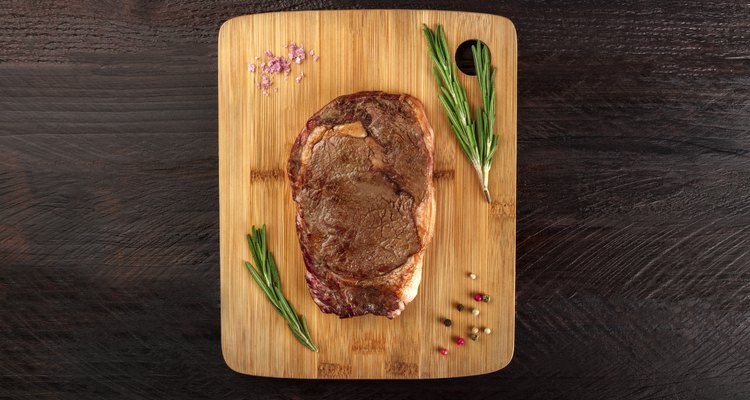
Plateresca/iStock/GettyImages
How to Come Out on Top with Underblade
Underblade steaks and roasts have the most tenderness of any beef cut in the chuck section, which includes the shoulder along with a little of the neck, upper "arms" and ribs. But saying the underblade has the most tenderness of the chuck region is a bit like saying top round has the most tenderness of the beef rump – the whole subprimal is tough, so you're really just describing the least tough, rather than the most tender, cut from the section. That said, you can wrangle beef chuck underblade, which has arguably the "beefiest" flavor of all the beef cuts, into tenderness with a little gentleness.
Why So Tough?
Like all cuts from the chuck subprimal, underblade has a lot of connective tissue, and a thick seam of cartilage running through its center, as well. This works to your advantage, though, and makes cuts from the chuck, the underblade in particular, more flavorful than other beef cuts.
As the underblade cooks, the cartilage and other connective tissues render down to a flavorful gelatin, essentially self-basting the interior muscle fibers you just can't reach from the surface. In this case, what appears to be a "bug" turns into a feature with the proper cooking method.
What to Do About It
Whether you have an underblade steak or a roast, you have to braise that bad boy to tenderize it – roasting, pan-frying or grilling turns underblade into nothing short of edible shoe leather. Marinades have little to no effect on its toughness, either, so "low and slow" is pretty much your only option.
Sear the underblade in a saute pan. Season the underblade (roast or steaks) to taste with salt and pepper, and sear it in a few tablespoons of olive oil on the stove over medium-high heat. Transfer the underblade to a deep, oven-safe pan, and heat the oven to 325F.
Add the secondary ingredients. You always want to include a a bay leaf and a couple roughly chopped onions, carrots and celery ribs to any braise for their aromatic properties. Although optional, a can of crushed tomatoes helps break down the connective tissue faster. If you use tomatoes, add 1 cup of beef stock; if you don't use tomatoes, add enough beef stock to reach about halfway up the sides of underblade.
Braise the underblade until tender, about 3 to 3 1/2 hours. Cover the roasting pan with a tight-fitting lid or aluminum foil. Check the tenderness after about 3 hours; the meat should fall apart easily with a fork.
Make a delicious pan gravy. Don't let those pan juices go waste. Strain the juices through a sieve and into a saucepan. Bring the juices to a simmer, and combine 1 tablespoon each flour and butter into a ball. Drop pieces of the flour and butter into the saucepan while whisking vigorously. Simmer the gravy for about 10 minutes, and season it to taste with kosher salt and freshly ground black pepper.
Related Articles

How to Cook Lamb Chuck
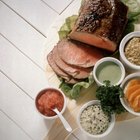
How to Cook a Flat-Cut Rump Roast

How to Cook Boneless Country Spare Ribs
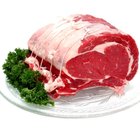
How to Marinate a Top Round Roast
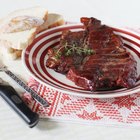
How to Smoke Elk Meat
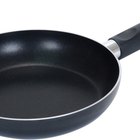
How to Cook Beef Top Round Pot Roast
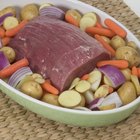
How to Make Bottom Round Roast Melt in ...
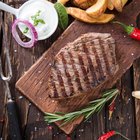
The Best Way to Cook Bison Steak

How to Cook Beef Shoulder Muscle

How to Cook Kangaroo Loin

Brisket vs. Tri-Tips
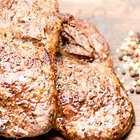
How to Braise a Beef Mock Tender Roast

How to Make Beef Bottom Round Roast ...
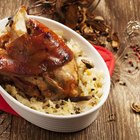
How to Cook Knuckle Roast

How to Cook Alligator Steak
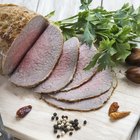
What Are the Less Expensive Cuts of ...
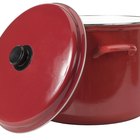
How to Slow Cook Brisket With Brown ...

How to Make a Blackbuck Antelope Roast
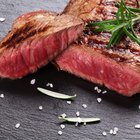
Easy Ways to Cook London Broil Steak in ...

How to Cook Axis Deer Steaks
References
Tips
- For a more juicy underblade roast, cook it in a roasting pan with the juices from the skillet, broth and vegetables like potatoes and carrots. Reduce the temperature to 300 F and braise it for an hour longer than suggested above.
Writer Bio
A.J. Andrews' work has appeared in Food and Wine, Fricote and "BBC Good Food." He lives in Europe where he bakes with wild yeast, milks goats for cheese and prepares for the Court of Master Sommeliers level II exam. Andrews received formal training at Le Cordon Bleu.